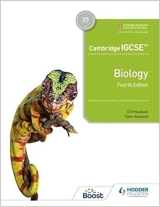Seed Structure, an Introduction
A seed develops from an ovule after fertilization. It consists of a tough coat or testa enclosing an embryo which is made up of a plumule, a radicle and one or two cotyledons. In favourable conditions the seed can grow and become a fully independent plant, bearing flowers and seeds during its life cycle. In the embryo of the seed are all the potentialities of development and growth to a mature plant resembling other members of its species in almost every detail of leaf shape, cell distribution and flower colour and structure.
Main Features
Testa
A tough, hard, outer coat, the testa protects the seed from fungi, bacteria and insects. It has to be split open by the radicle before germination can proceed.Hilum
The hilum is a scar left by the stalk which attached the ovule to the ovary wall.Micropyle
The micropyle is a tiny pore in the testa opposite the tip of the radicle. It admits water to the embryo before active germination.Radicle
The radicle is the embryonic root which grows and develops into the root system of the plant.Plumule
The plumule is the embryonic shoot. In it two or more leaves are usually visible, with a growing point enclosed between them.Cotyledons
The grasses and narrow-leaved plants like the iris and bluebell have seeds with only one cotyledon. The other flowering plants all have two cotyledons. They are leaves attached to the plumule and radicle by short stalks, and they often contain food reserves which are used during the early stages of germination. In most plants the cotyledons are brought out of the testa and above the ground where they become green and make food by photosynthesis. The cotyledons eventually fall off, usually after the first foliage leaves have been formed. The cotyledon leaves bear no resemblance to the foliage leaf, the shape of which is first apparent when the plumule leaves open and grow.Structure of types of seed
This is best shown by accompanying drawings. One important point of difference is that wheat has only one cotyledon, and a separate food store, called the endosperm, that is not present in the others.
Conditions for Germination
Water
Before they can begin germination, seeds need a supply of water. This softens the testa or fruit wall and allows the radicle to grow and push its way out. Water activates the enzymes which convert the starch stored in the cotyledons or endosperm into soluble sugars which are then transported in solution to the growing regions.Oxygen
At this stage seeds also need a supply of oxygen. This gas is necessary for aerobic respiration, from which the seed derives its energy for all the chemical processes which contribute to growth.Warmth
Seeds will not start to germinate if the temperature is too low. The minimum temperature needed varies with the species of seed.Light
Only a small number of species of plants have seeds which need light to begin germination. Once the cotyledons or plumule are above ground light is needed for photosynthesis.Dormancy
Most seeds when shed from the parent plant are very dry; only about 10 per cent of their weight is water. In this condition all the chemical processes of living are very slow and little food is used. In this dry condition the seed may remain alive but dormant for long periods without germinating but still retaining the power to do so. With a large enough number of seeds it could be shown that they are consuming oxygen and releasing carbon dioxide while dormant. If properly stored, wheat can still be germinated after about 15 years. Of any quantity of seeds, the percentage which will germinate decreases with the length of time they are kept dormant.
Experiments
The conditions for germination are explored in Biology Experiments 1 ‘Germination’ For illustrations to accompany this article see Seeds & Germination
See also: Videos of plants
| Search this site |
| Search the web |
© Copyright D G Mackean & Ian Mackean. All rights reserved.



